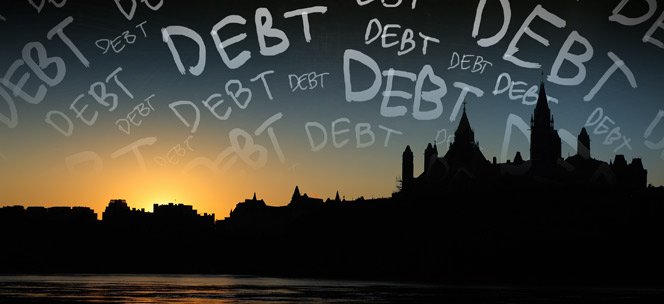Let's avoid a rerun of Alberta's nasty history with debt

Mere months ago the Alberta government enjoyed a triple-A credit rating, low unemployment, higher-than-average wages and lovely low taxes. Money flowed.
But oh, how quickly the tides can turn for the worse. And we’ve been to this movie before.
“We learn from history that we learn nothing from history,” said George Bernard Shaw.
In the 1930s, Alberta’s economy was largely based on agriculture. US-imposed tariffs and dropping food prices led to a substantial economic lag, ushering Alberta into the Great Depression with an already-heavy debt load. The Social Credit Party under Premier William Aberhart formed government and proposed both taking hold of the financial system and dishing out monthly payments to Albertans.
In 1935, Albertans began cashing in Alberta Savings Certificates – government bonds held by individuals – en masse. In response, the government imposed a moratorium on their redemption.
The provincial auditor said the spike in withdrawals was due to a lack of confidence from investors. They were “well aware that we have a very large public debt and know that it takes a large portion of our revenue to meet the service charges on the debt that we already have.”
That year, the government defaulted on its maturing bond principal, unable to secure a needed loan from the then-Dominion (federal) government. Nine years later, the province had defaulted on its $33.4 million in principal debt and $28.6 million in interest. The government simply couldn’t pay the bills. Alberta failed to repay its debt.
Clearly, at no point have we learned our lesson. Our provincial debt is currently over $17 billion, and our deficits are on a train without brakes. Our credit rating has been downgraded. Years of PC spending and government employee salaries soaring above the national average paved the way. In the last decade, our program spending increased by nearly 100 per cent.
Alberta is cycling back into fiscal irresponsibility. As we tumble, let’s not forget: there’s a reason we climbed to relatively recent prosperity. It wasn’t a snap of the fingers turning on the taps of oil. It was hard work and collective sacrifices when our government’s spending got out of control. We don’t have to flip the pages back to 1935 to find fiscal recklessness.
In 1992, Albertans acknowledged that the province’s debt burden had become a problem.
Premier Ralph Klein entered office. Klein’s critics bemoan his government’s cuts to services as ideological and unnecessary. But Klein was no ideologue intent on slashing government. Like the federal Liberals under Prime Minister Jean Chretien who made spending cuts to balance the budget, Klein simply did what had to be done.
Money doesn’t grow on trees. Borrowing, spending and racking up debt cannot continue indefinitely. It leads to major sacrifices.
In the 1992-93, interest payments on the debt cost taxpayers $1.4 billion, eating away nearly 10 per cent of revenues that could have gone to classrooms or hospital beds. The province had to untether itself from its debt burden. And so, the Klein government reduced spending.
It was tough. Public sector unions staged protests. Klein cut the pay of government sector employees (like himself) by 5 per cent.
Yet, Klein’s PCs won a second term in office, with increased support. Albertans in the public and private sector tightened their belts together, and together enjoyed the benefits: lower taxes, more opportunity, increased revenue in the long term and a redirection of tax dollars from debt interest payments to important services.
Today, it’s a dreadful re-run. According to a 2012 Macdonald-Laurier Institute (MLI) report detailing Alberta’s economic past, Alberta currently tops the charts as the most at-risk of provincial debt default in the next 30 years – more than any other province. The risk was bumped up because of Alberta’s high deficits, aging population and volatile energy revenues: three factors that have only worsened.
As Canadians we buy into political ‘cycles:’ this government will spend big, and the next will clean up the mess. But why put ourselves through a collective sacrifice that’s more dramatic than it needs to be?
We’ve had big-spending governments for more than a decade. The time is now to reduce spending, pay down debt, steady the course and spare us the drama.
Paige MacPherson is Alberta Director of the Canadian Taxpayers Federation.